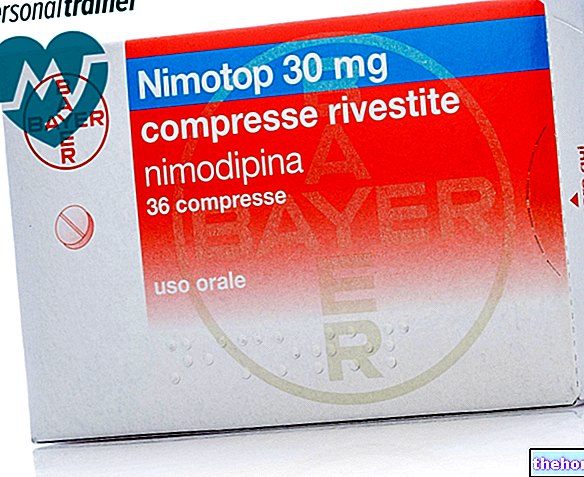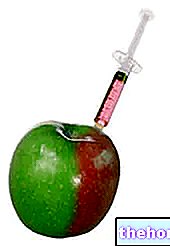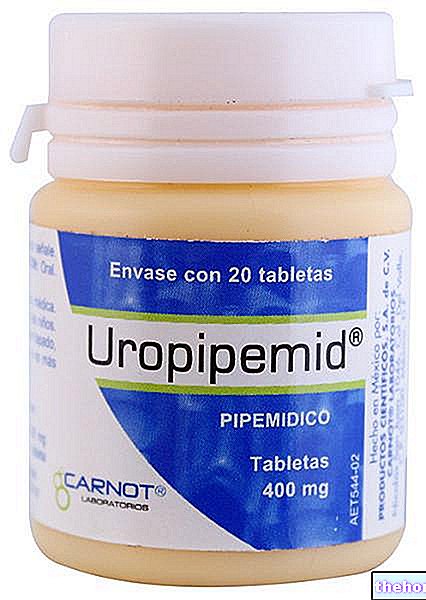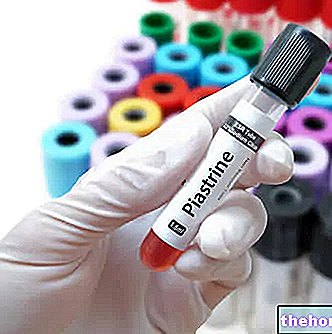Active ingredients: Hydrochlorothiazide
Esidrex 25mg Tablets
Indications Why is Esidrex used? What is it for?
Pharmacotherapeutic group
Antihypertensive (thiazide diuretic).
Therapeutic indications
Edema of cardiac, renal or hepatic origin.
Hypertension: alone or in combination with other antihypertensive drugs.
Contraindications When Esidrex should not be used
- Anuria (inability to urinate);
- severe renal insufficiency (glomerular filtration rate <30 ml / min / 1.73 m2);
- states of severe hepatic insufficiency;
- hypersensitivity to hydrochlorothiazide or to any of the excipients or other sulfonamide derivatives;
- refractory hypokalemia (low blood potassium level) and hyponatremia (low blood sodium level);
- hypercalcemia (high level of calcium in the blood);
- symptomatic hyperuricemia (history of gout or uric acid stones);
- hypertension during pregnancy.
Precautions for use What you need to know before taking Esidrex
Renal failure and kidney transplant
Thiazide diuretics may precipitate azotaemia in patients with chronic kidney disease. When Esidrex is used in patients with impaired renal function, periodic monitoring of blood electrolytes, including potassium, creatinine and uric acid levels is recommended. in the blood Esidrex is contraindicated in patients with severe renal impairment or anuria (see Contraindications).
No dosage adjustment is necessary in patients with mild to moderate renal impairment.
There is no experience with the administration of Esidrex in patients who have recently undergone kidney transplantation.
Hepatic insufficiency
No initial dose adjustment is required for patients with mild to moderate hepatic impairment. Thiazides, like other diuretics, when used to treat cirrhotic ascites, can cause electrolyte imbalance, hepatic encephalopathy, and hepato-renal syndrome. Hydrochlorothiazide is contraindicated in patients with severe hepatic insufficiency (see Contraindications).
Electrolyte imbalance
Treatment with Esidrex should only be started after correcting the hypokalaemia and any concomitant hypomagnesaemia (low level of magnesium in the blood). Thiazide diuretics can cause new onset hypokalaemia or exacerbate pre-existing hypokalaemia. Thiazide diuretics should be administered with caution in patients with conditions that lead to increased potassium loss. If hypokalaemia develops during treatment with hydrochlorothiazide, particularly if accompanied by clinical signs (eg muscle weakness, paresis, changes in the electrocardiogram), treatment with Esidrex should be discontinued until stable correction of the potassium balance.
As with all thiazide diuretics, Esidrex causes dose-dependent potassium loss.
In chronic treatment, serum potassium concentrations should be checked at the start of therapy and after 3-4 weeks. Thereafter - if the potassium balance is not affected by additional factors (eg vomiting, diarrhea, impaired renal function , etc.) checks must be carried out every 4-6 months.
In patients receiving digitalis, in patients showing signs of coronary artery disease (unless they are also receiving an ACE inhibitor), in patients receiving high doses of a β-agonist and in all cases where potassium concentrations in the blood are oral potassium salt (eg potassium chloride).
If oral potassium preparations are not tolerated, Esidrex can be combined with a potassium-sparing diuretic. In all cases of combination treatment, the maintenance and normalization of the potassium balance should be carefully monitored.
Esidrex is contraindicated in patients with refractory hypokalaemia (see Contraindications).
In patients who are also receiving ACE inhibitors, angiotensin receptor inhibitors (ARBs) or direct renin inhibitors (DRIs), combination treatment of Esidrex with a potassium salt or a potassium-sparing diuretic should be avoided.
Thiazide diuretics can cause new onset "hyponatremia and" hypochloraemic alkalosis (caused by chloride loss) or exacerbate pre-existing hyponatremia. Hyponatremia accompanied by neurological symptoms (nausea, progressive disorientation, apathy) has been observed. Treatment with hydrochlorothiazide should only be initiated after correction of pre-existing hyponatremia. In case of severe or rapid onset hyponatraemia during Esidrex therapy, treatment should be suspended until natremia is normalized.
Esidrex is contraindicated in patients with refractory hyponatremia (see Contraindications).
All patients being treated with thiazide diuretics should be monitored periodically for electrolyte imbalances, particularly potassium, sodium and magnesium.
Patients who have experienced severe fluid and / or sodium loss
In patients who have experienced severe fluid and / or sodium loss, such as those receiving high doses of diuretics, symptomatic hypotension may occur after initiation of Esidrex treatment. Esidrex should only be used after correction of any pre-existing deficiency. sodium and / or liquids.
Monitoring of blood electrolytes is particularly indicated in the elderly, in patients with ascites (collection of fluid in the abdominal cavity) due to liver cirrhosis and in patients with edema due to nephrotic syndrome (a kidney disease).
In the latter case, Esidrex should only be used under close supervision in patients with a normal level of potassium in the blood who show no signs of decreased body fluids or severe hypoalbuminaemia (low level of a blood protein called albumin).
Systemic lupus erythematosus
Thiazide diuretics, including hydrochlorothiazide, have been shown to exacerbate or activate systemic lupus erythematosus.
Metabolic and endocrine effects
Thiazide diuretics, including hydrochlorothiazide, can impair glucose tolerance and increase blood cholesterol and triglyceride levels.
In diabetic patients, adjustment of the dose of insulin or oral hypoglycaemics may be necessary.
Esidrex is contraindicated in patients with symptomatic hyperuricaemia (gout, uric acid stones) (see Contraindications). Hydrochlorothiazide can raise blood uric acid levels by reducing the elimination of uric acid and can cause or aggravate hyperuricaemia as well as precipitate gout in predisposed patients.
Thiazides reduce the elimination of calcium in the urine and, in the absence of known disturbances of calcium metabolism, may cause an intermittent and mild increase in calcium in the blood.Esidrex is contraindicated in patients with hypercalcaemia and should only be used after correcting pre-existing hypercalcaemia. If hypercalcaemia develops during treatment, Esidrex should be discontinued. Blood calcium levels should be monitored periodically during treatment with thiazides. Marked hypercalcaemia may be indicative of latent hyperparathyroidism (impaired function of the parathyroid glands). Administration of thiazides must be discontinued before performing parathyroid function tests
Photosensitivity
Cases of photosensitivity reactions have been reported during treatment with thiazide diuretics (see Undesirable effects). If photosensitivity reactions occur during treatment with Esidrex, it is recommended that treatment be discontinued. If it is deemed necessary to resume administration of the diuretic, it is recommended to protect the parts exposed to the sun or artificial UVA rays.
Acute angle-closure glaucoma
Hydrochlorothiazide, a sulfonamide, has been associated with an idiosyncratic reaction resulting in transient acute myopia and acute angle-closure glaucoma. Symptoms include decreased vision or eye pain and typically occur within hours to weeks of initiating therapy with the drug. Untreated acute angle-closure glaucoma can lead to permanent vision loss.
Primary treatment is the quickest possible discontinuation of hydrochlorothiazide. Prompt medical or surgical treatment may need to be considered if intraocular pressure cannot be controlled.
Risk factors for developing acute narrow-angle glaucoma may include a history of allergy to sulfonamides or penicillin
Other precautions
The antihypertensive effect of ACE inhibitors, angiotensin II receptor inhibitors (ARBs) or renin inhibitors (DRIs) is potentiated by agents that increase plasma renin activity (diuretics). Caution should be exercised when an ACE inhibitor (or ARB or DRI) is added to Esidrex, particularly in patients who have experienced a severe loss of fluid and / or sodium.
Hypersensitivity reactions due to hydrochlorothiazide can occur in all patients but are more likely in patients with allergy and asthma.
Interactions Which drugs or foods may change the effect of Esidrex
Before taking any medicine with Esidrex, consult your doctor or pharmacist. Tell your doctor or pharmacist if you have recently taken any other medicines, even those without a prescription.
It may be necessary to change the doses, observe other precautions or, in some cases, stop the administration of one of the two medicines; this applies both to drugs that must be prescribed by the doctor and to those that can be purchased in pharmacies without a prescription.
The following drugs may interact with Esidrex when administered concomitantly:
Lithium: Renal elimination of lithium is reduced by thiazides, therefore the risk of lithium toxicity may be increased by hydrochlorothiazide. Co-administration of lithium and hydrochlorothiazide is not recommended. If such a combination proves necessary, careful monitoring of serum lithium levels is recommended during concomitant use of the two medicinal products.
Medicinal products that can induce Torsades de Pointes: Due to the risk of hypokalaemia, hydrochlorothiazide should be administered with caution when combined with medicinal products that can induce Torsades de Pointes, particularly Class Ia and Class III antiarrhythmics and some antipsychotics.
Medicinal products affecting the serum potassium level: the blood potassium lowering effect of diuretics may be increased by concomitant administration of kaliuretic diuretics (which promote urinary excretion of potassium), corticosteroids, laxatives, adrenocorticotropic hormone (ACTH ), amphotericin, carbenoxolone, penicillin G, salicylic acid derivatives (see Precautions for use)
Medicinal products affected by changes in serum potassium: Periodic monitoring of potassium in the blood is recommended when Esidrex is administered with medicines affected by changes in blood potassium levels (e.g. digitalis glucosides, antiarrhythmics).
Medicinal products affecting blood sodium levels: The hyponatremic effect of diuretics can be intensified by concomitant administration of drugs such as antidepressants, antipsychotics, antiepileptics, etc. Caution is indicated in the long-term administration of these medicinal products.
Pressor amines (eg norepinephrine, adrenaline): Hydrochlorothiazide may reduce the response to pressor amines such as norepinephrine. The clinical significance of this effect is uncertain and not sufficient to exclude their use.
Other antihypertensive drugs: Thiazides potentiate the antihypertensive action of other antihypertensive drugs (eg, guanethidine, methyldopa, beta-blockers, vasodilators, calcium channel blockers, ACE inhibitors, ARBs and DRIs).
Digoxin and other digitalis glycosides: Thiazide-induced hypokalaemia or hypomagnesaemia may occur as side effects, favoring the onset of digitalis-induced cardiac arrhythmias.
Vitamin D and calcium salts: Administration of thiazide diuretics, including hydrochlorothiazide, and vitamin D or calcium salts can potentiate the increase in calcium in the blood. Concomitant use of thiazide-type diuretics may lead to hypercalcaemia in patients predisposed to this condition (eg hyperparathyroidism, neoplasms or vitamin D mediated conditions) by increasing tubular calcium reabsorption.
Antidiabetic agents (e.g. insulin and oral antidiabetic agents): Thiazides can impair glucose tolerance. Dose adjustment of the antidiabetic medicinal product may be required (see Precautions for use). Metformin should be used with caution due to the risk of lactic acidosis induced by possible functional renal failure associated with hydrochlorothiazid.
Beta blockers and diazoxide: The concomitant use of thiazide diuretics, including hydrochlorothiazide, and beta-blockers may increase the risk of hyperglycaemia. Thiazide diuretics, including hydrochlorothiazide, may enhance the hyperglycemic effect of diazoxide.
Medicines used in the treatment of gout: The dosage of uricosuric medicines (which help to eliminate uric acid in the urine) may need to be adjusted, as hydrochlorothiazide may increase blood uric acid levels. the dosage of probenecid or sulfinpyrazone. Concomitant administration of thiazide diuretics, including hydrochlorothiazide, may increase the incidence of hypersensitivity reactions to allopurinol.
Anticholinergics and other medicinal products affecting gastric motility: The bioavailability of thiazide-type diuretics may be increased by anticholinergic drugs (e.g. atropine, biperiden), apparently due to a decrease in gastrointestinal motility and gastric emptying rate. Conversely, pro-kinetic drugs such as cisapride are expected to decrease the bioavailability of thiazide-type diuretics.
Amantadine: Co-administration of thiazide diuretics (including hydrochlorothiazide) may increase the risk of adverse reactions caused by amantadine.
Ion Exchange Resins: Absorption of thiazide diuretics, including hydrochlorothiazide, is decreased by cholestyramine or colestipol. This could lead to a sub-therapeutic effect of thiazide diuretics. However, the interaction could be minimized by staggering the administration of the hydrochlorothiazide and the resin so that the hydrochlorothiazide is administered at least 4 hours before or 4-6 hours after the administration of the resin.
Cytotoxic agents: Thiazides, including hydrochlorothiazide, may reduce the renal excretion of cytotoxic agents (eg cyclophosphamide, methotrexate) and enhance their myelosuppressive effects.
Non-depolarising skeletal muscle relaxants: Thiazides, including hydrochlorothiazide, enhance the action of skeletal muscle relaxants such as curare derivatives.
Alcohol, barbiturates or narcotics: concomitant administration of thiazide diuretics with substances that also have a blood pressure lowering effect (eg by reducing sympathetic nervous system activity or through direct vasodilation) may potentiate orthostatic hypotension.
Methyldopa: There have been isolated reports of haemolytic anemia occurring with the concomitant use of methyldopa and hydrochlorothiazide.
Iodine Contrast Agents: In the case of diuretic-induced dehydration, the risk of acute renal failure increases, especially with high doses of iodinated products. Patients must be rehydrated prior to administration of the contrast medium.
Non-steroidal anti-inflammatory drugs (NSAIDs), including selective cyclooxygenase 2 inhibitors (COX-2 inhibitors) and acetylsalicylic acid: NSAIDs may weaken the diuretic and antihypertensive action of hydrochlorothiazide. Concomitant hypovolaemia can lead to acute renal failure.
Warnings It is important to know that:
Fertility, pregnancy and lactation
Ask your doctor or pharmacist for advice before taking any medicine
Pregnancy
Experience with the use of hydrochlorothiazide during pregnancy is limited, especially during the first trimester. Animal studies are insufficient.
Hydrochlorothiazide crosses the placenta. Based on its mechanism of action, the use of hydrochlorothiazide during the second and third trimester of pregnancy can impair fetal placental perfusion and can cause fetal and neonatal effects such as jaundice, electrolyte disturbances and thrombocytopenia Hydrochlorothiazide should not be used for the treatment of gestational edema, gestational hypertension or preeclampsia due to the risk of decreased plasma volume and placental hypoperfusion without a beneficial effect on the course of the disease.
Hydrochlorothiazide should not be used to treat hypertension in pregnant women except in rare situations where no other treatment could be used.
Feeding time
Hydrochlorothiazide is excreted in breast milk in small quantities. Thiazide diuretics in high doses cause intense diuresis which may inhibit milk production. The use of Esidrex during breastfeeding is not recommended. Breastfeeding doses should be kept as low as possible.
Fertility
There are no human fertility data for hydrochlorothiazide. In animal studies hydrochlorothiazide has no effect on fertility and conception.
Effects on the ability to drive or use machines
Esidrex does not affect the ability to drive or use machines. It should be borne in mind, however, that in rare cases, especially at the start of therapy, the drug may lead to worsening of vision (see Precautions for use).
For those who play sports: the use of the drug without therapeutic necessity constitutes doping and can in any case determine positive anti-doping tests.
Important information about some of the ingredients
This medicine contains lactose: in case of ascertained intolerance to some sugars, contact your doctor before taking this medicine.
This medicine contains wheat starch: can be given to people with celiac disease. People with wheat allergy (other than celiac disease) should not take this medicine.
Dosage and method of use How to use Esidrex: Dosage
Dosage
For oral use.
As with all diuretics, therapy should be started with the lowest possible dose. The dosage must be individually established, based on the clinical picture and the patient's response, in order to obtain the maximum therapeutic benefit and the least impact in terms of undesirable effects. The Esidrex dosage can be administered daily as a single dose or in two divided doses. It can be taken with or without food.
General population
Hypertension
The effective dose range is 12.5-50 mg / day. The recommended starting dose is 12.5 or 25 mg / day. At the defined dose, full effect is achieved after 3-4 weeks. If with 25 or 50 mg / day the reduction in blood pressure is not adequate, it is advisable to combine Esidrex with another antihypertensive preparation. Before using Esidrex in combination with an ACE inhibitor or an angiotensin receptor inhibitor (ARB) or a direct renin inhibitor (DRI), sodium and / or volume depletion must be corrected.
Edema of cardiac, renal or hepatic origin
The lowest effective dose should be identified by titration and given only for limited periods. Doses should not exceed 50 mg / day.
Special populations
Kidney failure
No initial dose adjustment is required in patients with mild to moderate renal impairment (see Precautions for use). Use of Esidrex is contraindicated in patients with anuria and in patients with severe renal impairment (glomerular filtration rate ( GFR) <30 ml / min / 1.73 m2).
Hepatic insufficiency
No initial dose adjustment is required for patients with mild to moderate hepatic impairment. Thiazides, like other diuretics, when used to treat cirrhotic ascites, can cause electrolyte imbalance, hepatic encephalopathy, and hepato-renal syndrome. Hydrochlorothiazide is contraindicated in patients with severe hepatic impairment (see "Precautions for use").
Overdose What to do if you have taken too much Esidrex
In case of accidental ingestion / intake of an excessive dose of Esidrex, notify your doctor immediately or go to the nearest hospital.
Signs and symptoms
Overdose with hydrochlorothiazide is associated with loss of electrolytes (potassium, chlorine, sodium) and dehydration caused by excessive diuresis. The most common signs and symptoms of overdose are nausea and sleepiness. The low level of potassium in the blood may induce muscle spasms and / or accentuate cardiac arrhythmias associated with the concomitant use of digitalis glycosides or certain antiarrhythmic drugs. If symptomatic hypotension occurs, supportive treatment should be initiated.
Treatment
The general supportive measures applied in all cases of overdose should be applied. Supportive treatment should also be initiated if symptomatic hypotension occurs.
IF YOU ARE IN ANY DOUBT ABOUT THE USE OF ESIDREX, CONTACT YOUR DOCTOR OR PHARMACIST
Side Effects What are the side effects of Esidrex
Like all medicines, Esidrex can cause side effects in some people.
Adverse reactions are sorted by frequency, most frequent first, using the following convention: very common (≥1 / 10); common (≥1 / 100,
Disorders of the blood and lymphatic system
Rare: Thrombocytopenia, sometimes with purpura
Very rare: Agranulocytosis, bone marrow depression, haemolytic anemia, leukopenia
Not known: Aplastic anemia
Disorders of the immune system
Very rare: Hypersensitivity Metabolism and nutrition disorders
Very common: Hypokalaemia
Common: Hyperuricaemia, hypomagnesaemia, hyponatremia
Rare: Hypercalcaemia, hyperglycaemia, worsening of the diabetic metabolic status
Very rare: Hypochloraemic alkalosis
Psychiatric disorders
Rare: Depression, sleep disturbances
Nervous system disorders
Rare: Dizziness, headache, paraesthesia
Eye disorders
Rare: Visual impairment
Not known: Acute angle-closure glaucoma
Cardiac pathologies
Rare: Cardiac arrhythmias
Vascular pathologies
Common: Orthostatic hypotension
Respiratory, thoracic and mediastinal disorders
Very rare: Respiratory distress (including pneumonia and pulmonary edema
Gastrointestinal disorders
Common: Decreased appetite, nausea and vomiting
Rare: Abdominal discomfort, constipation, diarrhea
Very rare: Pancreatitis
Hepatobiliary disorders
Rare: Intrahepatic cholestasis, jaundice
Skin and subcutaneous tissue disorders
Common: Hives and other forms of rash
Rare: Photosensitivity reactions
Very rare: Cutaneous lupus erythematosus-like reactions, reactivation of cutaneous lupus erythematosus, necrotizing vasculitis and toxic epidermal necrolysis
Not known: Erythema multiforme
Musculoskeletal and connective tissue disorders
Not known: Muscle spasm
Renal and urinary disorders
Not known: Renal dysfunction, acute renal failure
Diseases of the reproductive system and breast
Common: Impotence
General disorders and administration site conditions
Not known: Asthenia, pyrexia
Diagnostic tests
Very common: Increased cholesterol and triglycerides
Rare: Glycosuria
Compliance with the instructions contained in the package leaflet reduces the risk of undesirable effects.
If any of the side effects gets serious, or if you notice any side effects not listed in this leaflet, please inform your doctor or pharmacist.
Expiry and Retention
To keep the tablets away from light and moisture, store them in the original package.
Do not use in case of evident signs of deterioration of the packaging.
Expiry: check the expiration date indicated on the package.
WARNING: Do not use the medicine after the expiry date indicated on the package.
The expiry date refers to the product in intact packaging, correctly stored.
Medicines should not be disposed of via wastewater or household waste. Ask your pharmacist how to throw away medicines you no longer use. This will help protect the environment.
Keep this medicine out of the reach and sight of children.
Composition
One tablet contains: Active ingredient: 25 mg hydrochlorothiazide.
Excipients: lactose monohydrate; anhydrous colloidal silica; magnesium stearate; talc; wheat starch.
Pharmaceutical form and content
Box of 20 tablets
Source Package Leaflet: AIFA (Italian Medicines Agency). Content published in January 2016. The information present may not be up-to-date.
To have access to the most up-to-date version, it is advisable to access the AIFA (Italian Medicines Agency) website. Disclaimer and useful information.
01.0 NAME OF THE MEDICINAL PRODUCT
ESIDREX 25 MG TABLETS
02.0 QUALITATIVE AND QUANTITATIVE COMPOSITION
One tablet contains: 25 mg hydrochlorothiazide.
Excipients: Lactose monohydrate, wheat starch.
For the full list of excipients, see section 6.1.
03.0 PHARMACEUTICAL FORM
Tablets.
04.0 CLINICAL INFORMATION
04.1 Therapeutic indications
Hypertension: alone or in combination with other antihypertensive drugs.
Edema of cardiac, renal or hepatic origin.
04.2 Posology and method of administration
Dosage
As with all diuretics, therapy should be started with the lowest possible dose.
The dosage must be individually established, based on the clinical picture and the patient's response, in order to obtain the maximum therapeutic benefit and the least impact in terms of undesirable effects.
Method of administration
For oral use. The Esidrex dosage can be administered daily as a single dose or in two divided doses. It can be taken with or without food.
General population
Hypertension
The effective dose range is 12.5-50 mg / day. The recommended starting dose is 12.5 or 25 mg / day. At the defined dose, full effect is achieved after 3-4 weeks. If with 25 or 50 mg / day the reduction in blood pressure is not adequate, it is advisable to combine Esidrex with another antihypertensive preparation. Before using Esidrex in combination with an ACE inhibitor or an angiotensin receptor inhibitor (ARB) or a direct renin inhibitor (DRI), sodium and / or volume depletion must be corrected.
Edema of cardiac, renal or hepatic origin
The lowest effective dose should be identified by titration and given only for limited periods. Doses should not exceed 50 mg / day.
Special populations
Kidney failure
No adjustment of the starting dose is required in patients with mild to moderate renal impairment (see sections 4.4 and 5.2). The use of Esidrex is contraindicated in patients with anuria and in patients with severe renal insufficiency (glomerular filtration rate (GFR) 2).
Hepatic insufficiency
No starting dose adjustment is required for patients with mild to moderate hepatic impairment (see section 5.2). Thiazides, like other diuretics, when used to treat cirrhotic ascites, can cause electrolyte imbalance, hepatic encephalopathy, and hepatic syndrome. -renal. Hydrochlorothiazide is contraindicated in patients with severe hepatic impairment (see section 4.3).
Senior citizens
In elderly subjects, compared to young subjects, steady-state plasma concentrations of hydrochlorothiazide are higher, while systemic clearance is significantly lower. Therefore, careful surveillance of elderly patients receiving hydrochlorothiazide is appropriate (see section 5.2).
04.3 Contraindications
• Hypersensitivity to the active substance or to any of the excipients listed in section 6.1.
• Hypersensitivity to other sulfonamide derivatives.
• Anuria.
• Severe renal insufficiency (glomerular filtration rate (GFR) 2).
• States of severe hepatic insufficiency.
• Refractory hypokalaemia and hyponatremia.
• Hypercalcemia.
• Symptomatic hyperuricaemia.
• Hypertension in pregnancy.
04.4 Special warnings and appropriate precautions for use
Renal failure and kidney transplant
Thiazide diuretics may precipitate azotaemia in patients with chronic kidney disease. Periodic monitoring of serum electrolytes, including potassium, creatinine and serum uric acid levels is recommended when Esidrex is used in patients with impaired renal function. Esidrex is contraindicated in patients with severe renal impairment or anuria (see section 4.3).
No dosage adjustment is necessary in patients with mild to moderate renal impairment (GFR ≥ 30 ml / min / 1.73 m2).
There is no experience with the administration of Esidrex in patients who have recently undergone kidney transplantation.
Hepatic insufficiency
No starting dose adjustment is required for patients with mild to moderate hepatic impairment (see sections 4.2 and 5.2). Thiazides, like other diuretics, when used to treat cirrhotic ascites, may cause electrolyte imbalance, hepatic encephalopathy and hepato-renal syndrome. Hydrochlorothiazide is contraindicated in patients with severe hepatic insufficiency.
Electrolyte imbalance
Treatment with Esidrex should only be started after correcting the hypokalaemia and any concomitant hypomagnesaemia. Thiazide diuretics can cause new onset hypokalaemia or exacerbate pre-existing hypokalaemia. Thiazide diuretics should be administered with caution in patients with conditions that lead to increased potassium loss, e.g. salt-wasting nephropathy and pre-renal (cardiogenic) insufficiency of renal function. If hypokalaemia develops, particularly if accompanied by clinical signs (e.g. muscle weakness, paresis, electrocardiographic changes) treatment with Esidrex should be interrupted until stable correction of the potassium balance.
As with all thiazide diuretics, Esidrex-induced potassium clearance is dose dependent. In chronic treatment, serum potassium concentrations should be monitored at the start of therapy and after approximately 3-4 weeks. Subsequently - if the potassium balance is not influenced by other factors (e.g. vomiting, diarrhea, renal impairment, etc.) - potassium levels can be checked every 4-6 months.
In patients receiving digitalis, in patients who show signs of coronary artery disease (unless they are also receiving an ACE inhibitor), in patients who
receive high doses of a β-adrenergic agonist and in all cases where plasma potassium concentrations are oral potassium salt (e.g. KCl). If oral potassium preparations are not tolerated, Esidrex can be combined with a potassium-sparing diuretic.
In all cases of associated therapy, the maintenance and normalization of the potassium balance must be carefully monitored.
Esidrex is contraindicated in patients with refractory hypokalaemia (see section 4.3).
In patients who are also receiving ACE inhibitors, angiotensin II receptor blockers (ARBs) or direct renin inhibitors (DRIs), combination treatment of Esidrex with a potassium salt or potassium-sparing diuretic should be avoided.
Thiazide diuretics can cause new onset "hyponatremia and" hypochloraemic alkalosis or exacerbate pre-existing hyponatremia. Hyponatremia accompanied by neurological symptoms (nausea, progressive disorientation, apathy) has been observed. Treatment with hydrochlorothiazide should only be initiated after correction of pre-existing hyponatremia. In case of severe or rapid onset hyponatraemia during Esidrex therapy, treatment should be suspended until natremia is normalized.
Esidrex is contraindicated in patients with refractory hyponatremia (see section 4.3).
All patients being treated with thiazide diuretics should be monitored periodically for electrolyte imbalances, particularly potassium, sodium and magnesium.
Sodium and / or volume depleted patients
In sodium and / or volume depleted patients, such as those receiving high doses of diuretics, symptomatic hypotension may occur after initiation of Esidrex treatment. Esidrex should only be used after correction of any pre-existing sodium and / or sodium depletion. volume.
Monitoring of serum electrolytes is particularly indicated in the elderly, in patients with ascites due to liver cirrhosis and in patients with edema due to nephrotic syndrome.
In the latter case Esidrex should only be used under close supervision in patients with normal blood potassium who show no signs of volume depletion or severe hypoalbuminaemia.
Systemic lupus erythematosus
Thiazide diuretics, including hydrochlorothiazide, have been shown to exacerbate or activate systemic lupus erythematosus.
Effects on metabolism and on the endocrine system
Thiazide diuretics, including hydrochlorothiazide, can impair glucose tolerance and increase serum cholesterol and triglyceride levels.
In diabetic patients, adjustment of the dose of insulin or oral hypoglycaemics may be necessary.
Esidrex is contraindicated in symptomatic hyperuricaemia (see section 4.3). Hydrochlorothiazide may raise serum uric acid levels due to decreased uric acid clearance and may cause or exacerbate hyperuricaemia as well as precipitate gout in predisposed patients.
Thiazides decrease urinary calcium excretion and, in the absence of known disturbances of calcium metabolism, may cause an intermittent and mild increase in serum calcium. Esidrex is contraindicated in patients with hypercalcaemia and should only be used after correcting a pre- existing hypercalcaemia. Esidrex should be discontinued if hypercalcaemia develops during treatment. Serum calcium levels should be monitored periodically during treatment with thiazides. Marked hypercalcaemia may be indicative of latent hyperparathyroidism. Administration of thiazides should be discontinued before starting parathyroid function tests.
Photosensitivity
Cases of photosensitivity reactions have been reported during treatment with thiazide diuretics (see section 4.8). If photosensitivity reactions occur during treatment with Esidrex, it is recommended that treatment be discontinued. If it is deemed necessary to resume administration of the diuretic, it is recommended to protect the parts exposed to the sun or artificial UVA rays.
Acute angle-closure glaucoma
Hydrochlorothiazide, a sulfonamide, has been associated with an idiosyncratic reaction resulting in transient acute myopia and acute angle-closure glaucoma. Symptoms include acute onset decreased visual acuity or ocular pain and typically occur within hours to weeks of initiation of drug therapy. Untreated acute angle-closure glaucoma can lead to permanent vision loss.
Primary treatment is the quickest possible discontinuation of hydrochlorothiazide. Prompt medical or surgical treatment may need to be considered if intraocular pressure remains uncontrolled. The factors of
risk for developing acute angle glaucoma may include a history of allergy to sulfonamides or penicillin.
Other precautions
The antihypertensive effect of ACE inhibitors, ARBs or DRIs is enhanced by agents that increase plasma renin activity (diuretics). Caution should be exercised when an ACE inhibitor (or ARB or DRI) is added to Esidrex particularly in patients with severe sodium and / or volume depletion.
Hypersensitivity reactions due to hydrochlorothiazide can occur in all patients but are more likely in patients with allergy and asthma.
Important information about some of the ingredients
Esidrex contains lactose. Patients with rare hereditary problems of galactose intolerance, the Lapp-lactase deficiency or glucose-galactose malabsorption should not take this medicine.
Esidrex contains wheat starch: Wheat starch may contain gluten, but only in trace amounts, and is therefore considered safe for people with celiac disease.
04.5 Interactions with other medicinal products and other forms of interaction
The following drugs may interact with Esidrex when administered concomitantly:
Lithium: Renal clearance of lithium is reduced by thiazides, therefore the risk of lithium toxicity may be increased by hydrochlorothiazide. Co-administration of lithium and hydrochlorothiazide is not recommended. If this combination proves necessary, careful attention is recommended. monitoring of serum lithium levels during concomitant use of the two medicines.
Medicinal products that can induce Torsades de Pointes: Due to the risk of hypokalaemia, hydrochlorothiazide should be administered with caution when combined with medicinal products that can induce Torsades de Pointes, particularly Class Ia and Class III antiarrhythmics and some antipsychotics.
Medicinal products affecting the serum potassium level: The hypokalaemic effect of diuretics may be enhanced by the concomitant administration of kaliuretic diuretics, corticosteroids, laxatives, adrenocorticotropic hormone (ACTH), amphotericin, carbenoxolone, penicillin G, salicylic acid derivatives (see section 4.4).
Medicinal products affected by serum potassium alterations: Periodic monitoring of serum potassium is recommended when Esidrex is administered with medicinal products affected by serum potassium alterations (e.g. digitalis glucosides, antiarrhythmics).
Medicinal products affecting serum sodium levels: The hyponatremic effect of diuretics can be intensified by concomitant administration of drugs such as antidepressants, antipsychotics, antiepileptics, etc. Caution is indicated in the long-term administration of these medicinal products.
Pressor amines (eg norepinephrine, adrenaline): Hydrochlorothiazide may reduce the response to pressor amines such as norepinephrine. The clinical significance of this effect is uncertain and not sufficient to exclude their use.
Other antihypertensive drugs: Thiazides potentiate the antihypertensive action of other antihypertensive drugs (eg, guanethidine, methyldopa, beta-blockers, vasodilators, calcium channel blockers, ACE inhibitors, ARBs and DRIs).
Digoxin and other digitalis glycosides: Thiazide-induced hypokalaemia or hypomagnesaemia may occur as side effects, favoring the onset of digitalis-induced cardiac arrhythmias.
Vitamin D and Calcium Salts: Administration of thiazide diuretics, including hydrochlorothiazide, and vitamin D or calcium salts may potentiate the increase in serum calcium. Concomitant use of thiazide-type diuretics may lead to hypercalcaemia in patients predisposed to this condition (eg hyperparathyroidism, neoplasms or vitamin D mediated conditions) by increasing tubular calcium reabsorption.
Antidiabetic agents (e.g. insulin and oral antidiabetic agents): Thiazides can impair glucose tolerance. Dose adjustment of the antidiabetic medicinal product may be required (see section 4.4). Metformin should be used with caution due to the risk of lactic acidosis induced by possible functional renal failure associated with hydrochlorothiazide.
Beta blockers and diazoxide: The concomitant use of thiazide diuretics, including hydrochlorothiazide, and beta-blockers may increase the risk of hyperglycaemia. Thiazide diuretics, including hydrochlorothiazide, may enhance the hyperglycemic effect of diazoxide.
Medicines used in the treatment of gout: The dosage of uricosuric medicinal products may need to be adjusted as hydrochlorothiazide may increase serum uric acid levels. The dosage of probenecid or sulfinpyrazone may need to be increased. Co-administration of thiazide diuretics, including "hydrochlorothiazide, may increase the incidence of hypersensitivity reactions to allopurinol."
Anticholinergics and other medicinal products affecting gastric motility: The bioavailability of thiazide-type diuretics may be increased by anticholinergic drugs (eg.atropine, biperiden), apparently due to a decrease in gastrointestinal motility and gastric emptying rate. Conversely, pro-kinetic drugs such as cisapride are expected to decrease the bioavailability of thiazide-type diuretics.
Amantadine: Co-administration of thiazide diuretics (including hydrochlorothiazide) may increase the risk of adverse reactions caused by amantadine.
Ion Exchange Resins: Absorption of thiazide diuretics, including hydrochlorothiazide, is decreased by cholestyramine or colestipol. This could result in a sub-therapeutic effect of thiazide diuretics. However, the interaction could be minimized by staggering the administration of hydrochlorothiazide and of the resin so that the hydrochlorothiazide is administered at least 4 hours before or 4-6 hours after administration of the resin.
Cytotoxic agents: Thiazides, including hydrochlorothiazide, may reduce the renal excretion of cytotoxic agents (eg. Cyclophosphamide, methotrexate) and enhance their myelosuppressive effects.
Non-depolarising skeletal muscle relaxants: Thiazides, including hydrochlorothiazide, enhance the action of skeletal muscle relaxants such as curare derivatives.
Alcohol, barbiturates or narcotics: concomitant administration of thiazide diuretics with substances that also have a blood pressure lowering effect (eg by reducing sympathetic nervous system activity or through direct vasodilation) may potentiate orthostatic hypotension.
Methyldopa: There have been isolated reports of haemolytic anemia occurring with the concomitant use of methyldopa and hydrochlorothiazide.
Iodine Contrast Agents: In the case of diuretic-induced dehydration, the risk of acute renal failure increases, especially with high doses of iodinated products. Patients must be rehydrated prior to administration of the contrast medium.
NSAIDs and selective Cox-2 inhibitors: concomitant administration of NSAIDs (salicylic acid derivatives, indomethacin) may reduce the diuretic and antihypertensive activity of Esidrex. Concomitant hypovolaemia can lead to acute renal failure.
04.6 Pregnancy and lactation
Pregnancy
Experience with the use of hydrochlorothiazide during pregnancy is limited, especially during the first trimester. Animal studies are insufficient.
Hydrochlorothiazide crosses the placenta. Based on its mechanism of action, the use of hydrochlorothiazide during the second and third trimester of pregnancy can compromise fetal-placental perfusion and cause fetal and neonatal effects such as jaundice, disturbances in electrolyte balance and thrombocytopenia.
Hydrochlorothiazide should not be used in gestational edema, gestational hypertension or pre-eclampsia due to the risk of decreased plasma volume and placental hypoperfusion, without beneficial effects on the course of the disease.
Hydrochlorothiazide should not be used in essential hypertension in pregnant women except in rare situations where no other treatment can be used.
Feeding time
Hydrochlorothiazide is excreted in breast milk in small quantities. Thiazides in high doses cause intense diuresis which can inhibit milk production. The use of Esidrex while breastfeeding is not recommended. If Esidrex is used during breastfeeding, doses should be kept as low as possible.
Fertility
There are no human fertility data for hydrochlorothiazide. In animal studies hydrochlorothiazide had no effect on fertility and conception (see section 5.3).
04.7 Effects on ability to drive and use machines
Esidrex does not affect the ability to drive or use machines. It should be borne in mind, however, that in rare cases, especially at the start of therapy, the drug may lead to worsening of vision (see also sections 4.4 and 4.8).
04.8 Undesirable effects
Adverse reactions are sorted by frequency, most frequent first, using the following convention: very common (? 1/10); common (? 1/100,
Reporting of suspected adverse reactions
Reporting of suspected adverse reactions occurring after authorization of the medicinal product is important as it allows continuous monitoring of the benefit / risk balance of the medicinal product. Healthcare professionals are asked to report any suspected adverse reactions via the national reporting system. "address" www.agenziafarmaco.gov.it/it/responsabili ".
04.9 Overdose
Signs and symptoms
Overdose with hydrochlorothiazide is associated with electrolyte depletion (hypokalaemia, hypochloraemia, hyponatremia) and dehydration caused by excessive diuresis. The most common signs and symptoms of overdose are nausea and sleepiness. Hypokalaemia may induce muscle spasms and / or accentuate cardiac arrhythmias associated with the concomitant use of digitalis glycosides or certain antiarrhythmic drugs.
Treatment
The general supportive measures applied in all cases of overdose should be applied. Supportive treatment should also be initiated if symptomatic hypotension occurs.
05.0 PHARMACOLOGICAL PROPERTIES
05.1 Pharmacodynamic properties
Pharmacotherapeutic group: diuretics with minor diuretic action, thiazides
ATC code: C03AA03
Hydrochlorothiazide, the active substance of Esidrex, is a benzothiadiazine (thiazide) diuretic. Thiazide diuretics act mainly in the distal renal tubule (initial convoluted part), inhibiting the reabsorption of NaCl (antagonizing the Na + -Cl- cotransporter), and promoting the reabsorption of Ca ++ ions (by an unknown mechanism). The "increased excretion of Na + ions and water in the cortical collecting tubule and / or" increased flow lead to an increase in secretion and excretion of ions K + and H +.
The resulting increase in urinary excretion of sodium and chlorine and the minor increase in potassium excretion are dose-dependent.
The diuretic and natriuretic effect begins within 2 hours after oral administration of hydrochlorothiazide, reaches its maximum after 4-6 hours and may persist for 10-12 hours.
Thiazide-induced diuresis first induces a decrease in plasma volume, cardiac output and systemic arterial pressure. The renin-angiotensin-aldosterone system may be activated. During chronic treatment the hypotensive effect is maintained, probably due to a fall in total peripheral vascular resistance; cardiac output returns to pre-treatment values, and only a small reduction in plasma volume persists, while activity can be elevated. plasma renin.
In the case of long-term administration, the antihypertensive effect of Esidrex is dose-dependent over the dose range of 12.5 to 50-75 mg / day. In most patients, the maximal hypotensive effect is achieved with 50 mg / day.
Daily doses above 50 mg rarely increase the therapeutic benefit but increase the risk of metabolic side effects.
The hypotensive effect of hydrochlorothiazide is enhanced by the combination with other antihypertensive preparations. In this way a further lowering of blood pressure can be obtained in many patients who had not responded adequately to monotherapy.
05.2 Pharmacokinetic properties
Absorption
After oral administration, as with Esidrex tablets, approximately 70% of the administered dose is absorbed by hydrochlorothiazide.
Simultaneous food intake or fasting causes changes in the absorption of hydrochlorothiazide of little clinical significance. In patients with congestive heart failure, absorption is reduced.
After oral administration of single doses of 12.5 - 25 - 50 and 75 mg, mean peak plasma concentrations of 70, 142, 260 and 376 ng / ml, respectively, are reached approximately 2 hours after taking Esidrex. of therapeutic doses the systemic availability of hydrochlorothiazide is proportional to the dose.
Continuous administration does not alter the fate of hydrochlorothiazide in the body. After 3 months of treatment with 50 mg hydrochlorothiazide daily, no differences in absorption, elimination or excretion were observed compared to short-term treatment. In case of repeated administration of 75 mg of hydrochlorothiazide, p. ex. Mean steady-state plasma concentrations of 111 ng / mL were observed daily for 6 weeks.
Distribution
Hydrochlorothiazide accumulates in erythrocytes, reaching a peak concentration approximately 4 hours after oral administration. After 10 hours, the concentration in erythrocytes is approximately 3 times higher than in plasma.
The apparent volume of distribution has been estimated at 4-8 L / kg and plasma protein binding has been reported to be approximately 40-70%.
Hydrochlorothiazide crosses the placental barrier and, in the umbilical vein, reaches levels similar to those of maternal plasma. The drug accumulates in the amniotic fluid, exceeding the plasma concentration in the umbilical cord vein by up to 19 times. L "hydrochlorothiazide it is also found in breast milk: in the case of daily ingestion of about 600 ml of milk, the newborn does not ingest more than 0.05 mg of the drug.
Metabolism and elimination
Hydrochlorothiazide is cleared from plasma with a half-life of 6-15 hours in the terminal phase. After oral administration, 60% -80% of the dose is excreted in the urine within 72 hours (95% as unchanged hydrochlorothiazide and approximately 4% as 2-amino-4-chloro-m-benzenedisulfonamide hydrolysate (ACBS). ). Up to 24% of an oral dose may be recovered in the faeces, while a negligible amount is excreted with the bile.
Characteristics of patients
No starting dose adjustment is required in patients with mild to moderate renal impairment (see sections 4.2 and 4.4). In the presence of renal impairment, mean peak plasma levels and AUC values of hydrochlorothiazide are increased and the rate of urinary excretion is reduced. In patients with mild to moderate renal impairment, a 3-fold increase was observed. AUC of hydrochlorothiazide. In patients with severe renal insufficiency, an 8-fold increase in AUC was observed. Esidrex is contraindicated in patients with anuria or severe renal insufficiency (GFR 2) (see section 4.3).
No adjustment of the starting dose of Esidrex is required in elderly patients. Limited data suggest that the systemic clearance of hydrochlorothiazide is reduced in both healthy and hypertensive elderly compared to healthy young volunteers.
Liver disease does not significantly alter the pharmacokinetics of hydrochlorothiazide and dose reduction is generally not required.
05.3 Preclinical safety data
Mutagenic potential has been defined in a number of in vitro and in vivo test systems. While some positive results had been obtained in in vitro studies, all in vivo studies had given negative results. It was therefore concluded that there is no relevant mutagenic potential in vivo.
From the experimental data available it appears that hydrochlorothiazide does not possess any carcinogenic potential in rats and mice (hepatocellular tumors in mice were observed only in males treated at the highest doses; however, this incidence did not exceed the levels historically found in controls).
Hydrochlorothiazide was not teratogenic and had no effects on fertility and conception. In 3 animal species tested, with doses administered that were at least 10 times higher than the recommended human doses of approximately 1 mg / kg, no Teratogenic potential. A slowdown in weight gain in suckling rat pups has been attributed to the high dose (15 times the human dose) and the diuretic effects of hydrochlorothiazide with consequent effects on milk production (see section 4.6).
06.0 PHARMACEUTICAL INFORMATION
06.1 Excipients
Lactose monohydrate; anhydrous colloidal silica; magnesium stearate; talc; wheat starch.
06.2 Incompatibility
Not relevant.
06.3 Period of validity
3 years
06.4 Special precautions for storage
Store the tablets in the original package to protect them from moisture and light.
06.5 Nature of the immediate packaging and contents of the package
Non-toxic PVC / PE / PVDC blisters.
Box of 20 tablets.
06.6 Instructions for use and handling
No special instructions.
07.0 MARKETING AUTHORIZATION HOLDER
Novartis Farma S.p.A.
Largo Umberto Boccioni, 1
21040 Origgio VA
Italy
08.0 MARKETING AUTHORIZATION NUMBER
A.I.C. n. 015094016.
09.0 DATE OF FIRST AUTHORIZATION OR RENEWAL OF THE AUTHORIZATION
Date of first authorization: 13 April 1959
Date of most recent renewal: 1 June 2010
10.0 DATE OF REVISION OF THE TEXT
11/2015




























